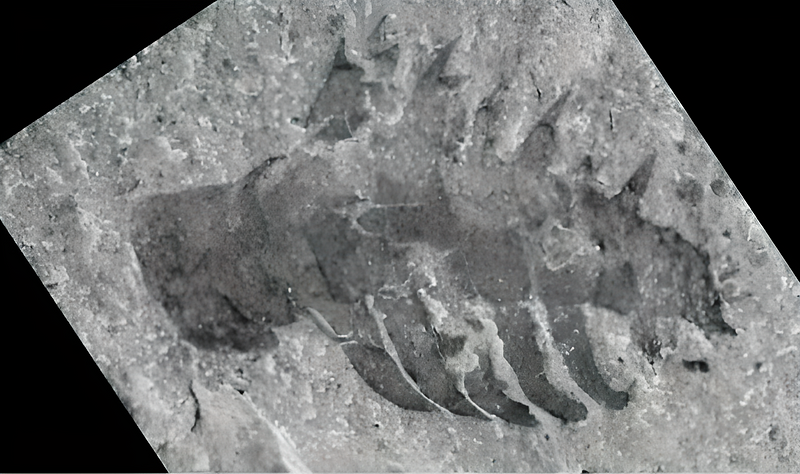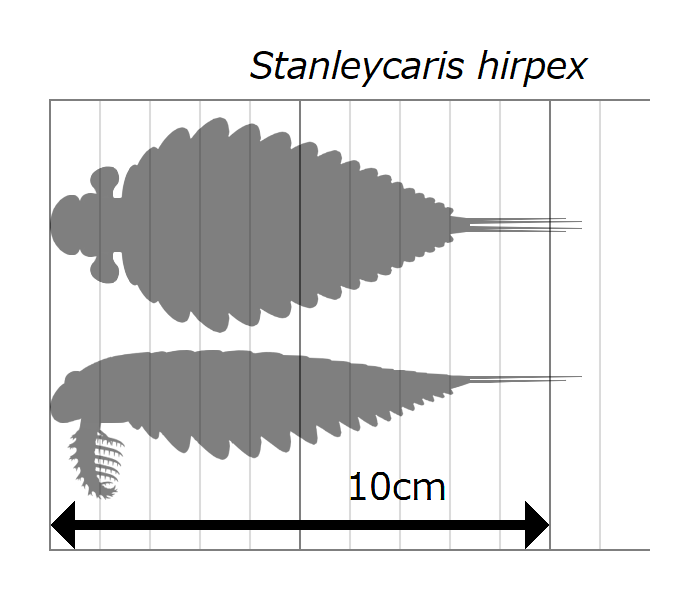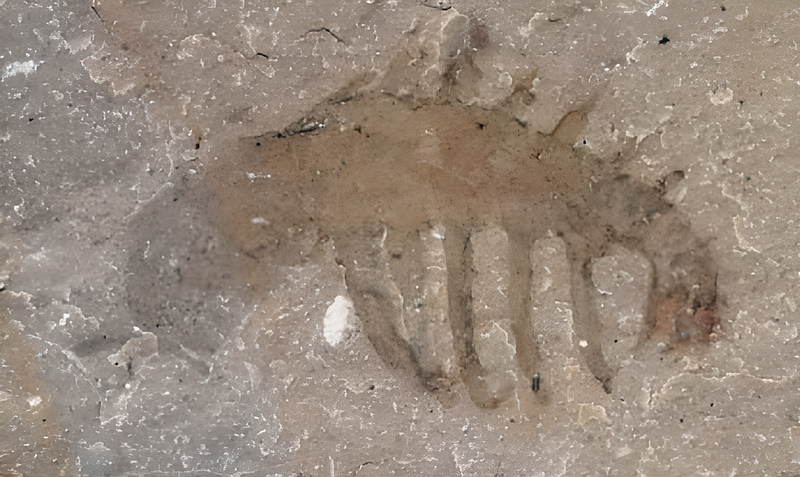Fossil Discovery: The Intriguing Stanleycaris hirpex Unveiled
Written on
Chapter 1: The Discovery of Stanleycaris hirpex
A significant fossil of a marine predator dating back 500 million years has been unearthed, showcasing an extraordinary creature with three eyes. The extinct arthropod, known as Stanleycaris hirpex, featured a body made up of 17 segments that ended in spiky protrusions, along with a pair of coiled appendages extending from its mouth. This remarkable marine predator's fossils were found in the Rocky Mountains.

[Photo: Stephen Pates, Allison C. Daley, Javier Ortega-Hernández, CC BY 4.0, via Wikimedia Commons]
Stanleycaris hirpex was part of an ancient group known as Radiodonta, which thrived in the oceans during the Cambrian period over 500 million years ago. These creatures were among the largest of their time, closely related to today's insects. Radiodontans had segmented bodies and large, tick-like limbs extending from their mouthparts. Some of the most formidable members of this group reached up to a meter in length, resembling giant shrimp equipped with sharp, spear-like appendages, making them the apex predators of their era.
The discovery of Stanleycaris hirpex is particularly significant due to the large number of fossils found—often numbering in the hundreds—at a site where researchers documented their findings in the journal Current Biology.
Section 1.1: The Burgess Shale Site
Researchers explored the Burgess Shale site located in British Columbia's Rocky Mountains. This site, discovered in the early 20th century, sits at an elevation of 2,500 meters above sea level, where sediments from the Cambrian seafloor were uplifted during mountain-building events.
The abundance of Stanleycaris hirpex fossils found here is remarkable, as noted by Joseph Moysiuk, lead author from the University of Toronto: “The significance of this find lies in the hundreds of fossils of this species we encountered. They exhibit detailed remnants of brain lobes and various parts of the nervous system.”

[Photo: Junnn11, CC BY-SA 4.0, via Wikimedia Commons]
Subsection 1.1.1: Brain Structure Insights
Analysis of the fossils revealed that Stanleycaris hirpex possessed a brain composed of only two lobes, in contrast to modern arthropods like insects that typically have three. This extinct predator likely had the protocerebrum, which connects to the eyes, and the deutocerebrum, linked to its grasping limbs.
Moysiuk explains on Live Science, “The exceptional preservation of these fossils allows us to delve deeper into the evolution of this animal’s nervous system. Radiodonta are crucial to understanding the evolutionary history of contemporary arthropods.”

[Photo: Stephen Pates, Allison C. Daley, Javier Ortega-Hernández, CC BY 4.0, via Wikimedia Commons]
Section 1.2: The Hunting Mechanism of Stanleycaris hirpex
Scientists were particularly intrigued by the head structure of this ancient arthropod. Unlike its relatives, which typically possess two eyes, Stanleycaris hirpex had three: two situated on the sides of its head and a notably large third eye at the center.
“The revelation of this third eye was astonishing,” Moysiuk remarked. “We believed we had a solid understanding of Radiodont structure and appearance.” The function of this additional eye in a 20 cm long predator remains uncertain, though researchers speculate it may have enhanced its hunting abilities, allowing for better spatial orientation and swift body maneuvering.
Chapter 2: Insights Into Evolutionary Biology
The video title is "Opening the Third Eye: The Fossil Record's Story of Sensory Evolution - YouTube," providing an engaging exploration of the evolutionary significance of this unique fossil discovery.